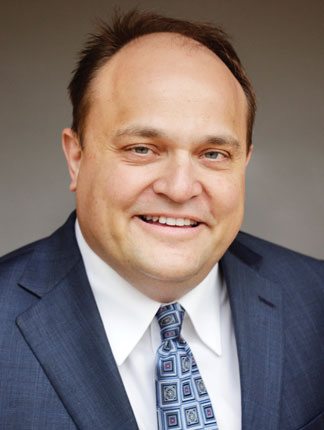Some things don’t change. Members of the 116-year-old Western Seed Association find value in continuity and consistency.
In 1899, a group of seedsmen formed the Western Seed Association to help facilitate the seed business and discuss industry issues. Known by many as “The Western,” the association still maintains its original mission: to host an annual meeting based in Kansas City, Mo., for industry members to meet and discuss seed issues and to facilitate trade.
According to Joe Stephens, WSA president in 1986 and a member since 1958, Kansas City was chosen for a few reasons.
“Missouri was chosen as the meeting place since the rail corridor at the time was a major hub for seed trade within the United States,” Stephens says. “Since trains were the main mode of transportation, this was a good location for buyers and sellers to meet after harvest.”
In the early 1900s, it was determined that the conference would be held each year in November — when harvest would normally be complete, and most sellers and buyers could gather to “trade” seed.
“The trading floor allowed industry members to meet and trade seed, such as timothy, clover and alfalfa, and build trading relationships,” Stephens says. “Most times, back in the day, an agreement of trade was completed with a handshake.”
Garth Kaste, who currently serves as WSA president, stresses that consistency in timing and location is what makes the Western a valuable tool for buyers and sellers — timing is everything.
“The turf, forage and native seed industry can all come together after the seed harvest with a good idea of new crop inventories,” Kaste says. “This allows buyers and sellers to meet each other’s needs at the time of the meeting.”
Stephens, who retired in 1996, remains a loyal supporter and volunteers each year at the conference. “It’s an informal meeting that offers members the opportunity to see new products, meet distributors and build relationships,” he says.
Growing With the Times
Wendell Howard, 2014 president of the WSA, says the organization has remained strong throughout the past century due to industry interest.
“It’s a very popular conference because membership is affordable and the meeting itself is simple for members to conduct business,” Howard says. “It is simple to book appointments and meet with various distributors and customers.”
Howard shares that opportunities at the Western have grown due to its membership base.
“Today, there are not only members from the United States, but there are also foreign entities — about 20 percent,” he says. “The Western today helps to facilitate trade from around the globe. There is real value in attending the conference and I wouldn’t miss it for the world.”
Don Wertman, WSA president in 2001, explains that the name is a bit of a misnomer since the association has grown not only in size but also geographically.
“The Western in the early days was a way for the upper mid-western seed industry to meet but today members come from locations on the west and east coasts, Canada and from overseas,” Wertman says. “Geographically membership has become international.”
He adds that growth in the past 30 to 40 years has also evolved around further trade opportunities.
“While forage, turf and native seed trade has always been the norm for the association, we now have grown into conservation seed and cover crops,” Wertman says. “It’s these new business inroads that have also contributed to geographical growth for the WSA.”
Jesse Smart, 1991 WSA president, and his wife Susan currently manage the WSA convention. They say that it’s the uniqueness of the association that helps maintain its strong membership.
“The Western serves the needs of a section of the seed industry that nothing else meets,” Jesse says. “This one is unique and why the association has more than 400 members, including more than 50 foreign companies.”
Smart has been attending the Western for 50 years. “There are always new distributors and suppliers to meet with each year,” Smart says.
He notes that roughly 12 to 15 new members are added every year, with attendance at roughly 600 to 700-plus people each year.
Howard adds that whether you are a distributor or customer, you can set your own agenda at the pace you want.
“I will book my appointments and see foreign members one day and local the next,” he says. “It’s low key, and I set the pace. It was a real privilege to be president of the WSA.”
Time-Tested Traditions
The other unique aspect of the association is its long-standing traditions, of which there are many.
“The WSA does not hold any political positions and does not lobby,” Wertman explains. “While the WSA is a member of other seed associations, such as the American Seed Trade Association, the main vision remains as a source to facilitate trade and support the U.S. seed industry.”
The other long-standing tradition is maintaining and building seed business relationships.
“Everyone will tell you that there are many long-term relationships built at the Western each and every year,” Wertman says. “Some business relationships are now in their third and fourth generation. It’s a rarity in the business world to maintain business relationships for 50, 60 and 70 years, but not at the Western.”
The meetings now are not only to meet others in the seed business, but also to discuss how members can continue to work together in the future, Kaste adds.
Today, the Western also offers educational presentations and a chance to exchange information, which have been added to the agenda in recent years. ASTA’s Farm and Lawn Seed Divisions hold meetings during the Western and the Field Seed Institute of North America also meets during this time.
According to Kaste, the association will continue to see future growth by remaining consistent.
“While the Western has evolved through the years, it is the organization’s consistency that keeps members coming back each year,” he says.
Western Seed Association Past Presidents
2014 Wendell Howard
2013 Mike Baker
2012 Kurt Austermann
2011 Terry Peters
2010 Bob O’Donnell
2009 Steve Tubbs
2008 Gayle Stegmann
2007 Tom Lutgen
2006 Don Berry
2005 Ronnie Stapp
2004 David Knutson
2003 Ken Fearday
2002 Thomas Strachota
2000-01 Donald Wertman
1999 Doyle Jacklin
1998 Art Armbrust
1997 Tom Voges
1996 Dan Swindell
1995 Dean Urmston
1994 Mike Hughes
1993 Hugh MacWilliam
1992 Wm. J. Whitacre
1991 Jesse R. Smart
1990 Jim Gilbreath
1989 Kent Schulze
1988 James L. Carnes
1987 James Billings
1986 Joseph Stephens
1985 Royce Richardson
1984 George Jones
1983 Fred Clark
1982 Gail E. Sharp
1981 Arnold Terpstra
1980 Roy A. Edwards
1979 James Girardin
1978 Frank Bergamini
1977 Charles Moses
1976 Charles Scott
1975 Jerry Peterson
1974 Ross Syler
1973 Hal Walton
1972 Herman Schulte
1971 Alan Hick
1970 Cliff Hill
1969 John Sherrill
1968 Gould Metcalf
1967 William Teweles
1966 Ted Klugman
1965 Robt. L. Thedinger
1964 Earl W. Seldon
1963 E. F. Mangelsdorf
1962 Robert Pease
1961 J. W. McMannama
1960 Ward Alderman
1959 Robert Appleman
1958 Herman Jolosky
1957 Robert Sexauer
1956 Carl Roth
1955 Walter Wesson
1953-54 Harry Hirsch
1952 E. Mangelsdorf
1951 Robert Pommer
1950 Charles Sinn
1949 Raul Stewart
1947-48 John Nicholson
1946 Elmer Sexauer
1944-45 Stanley Folsom
1942-43 B. F. Sheehan
1940-41 List Peppard
1938-39 Earl M. Page
1936-37 J. W. Mathys
1934-35 Berkeley Michael
1930-33 Carl R. Chesmore
1926-29 Max Wilheimi
1920-25 F. W. Mangelsdorf
1915-19 H. A. Johns












